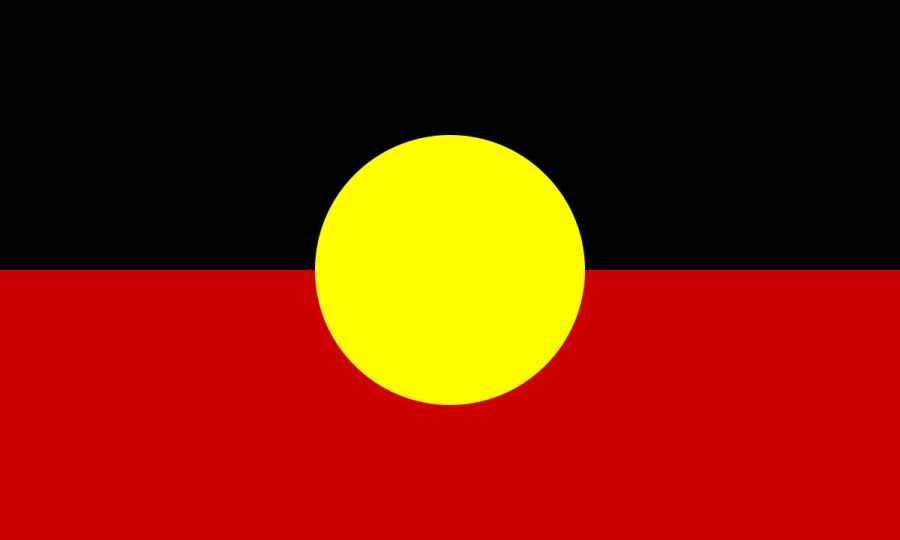Location, Land, and Climate
Australia, the aboriginal homeland, is earth's direst and flattest continent. Only the eastern seaboard and the northern tropical forests get consistent rainfall. Hundreds of linguistically and culturally distinct aboriginal tribes have lived in harmony with this harsh environment for over 30,000 years.
After European settlers arrived in 1788, thousand of aborigines died from diseases; colonists systematically killed many others. At first contact, there were over 250,000 aborigines in Australia. The massacres ended in the 1920 leaving no more than 60,000. Since then, the population has grown, and by the next century as many as 30,000 people may legitimately claim aboriginal descent.
Livelihood
Aborigines were traditionally nomads. Men hunted larger animals; women hunted smaller ones and dug with sticks to unearth eggs, roots, and grubs. Women provided up to 80 percent of the staples and processed all the food.
Today, urban and many rural aborigines rely on stores. The government encourages this. For examples" to aboriginal communities to extol the virtues of balanced European diet. But aboriginal women often can't afford the ingredients.
Aboriginal poverty stems partly from low wages and lack of jobs. Unemployment is six times the national average, and aboriginal income is less than half the average. Nonetheless, some have found a niche in the Australian economy. Many aboriginal men work aqs "stockmen" (cowboys). Aboriginal work mostly in health care, clerical work, store-keeping, and teaching.
Traditional dwelling range from the desert wiltia - round huts made with boughs - to rock and cave shelters. In the twentieth century, the government has replaced many of these practical, temporary shelters with European-style homes. Aborigines often protest by ignoring the houses and constructing "humpies" - lean-to's with tin roofs
Cultural Systems
Religions belief and ritual shape all aboriginal life from ground, cave, and bark painting to healing to the celebration of life events. While religion is sex-segregated, both sexes perform major rituals, and men and women alike are respected artists and healers.
Aborigines believe that a group of deities created the universe in the dreamtime. This sacred time encompasses the moment of creation and is interwined with the proftane time human beings live in. Time, space, and the ancestor deities are fused into a constant presence. These powers still rule from the natural sites they now inhabit. Any tree, rock, and body of water that could house a spirit from the dreamtime is sacred. Thus, aborigines are spiritually as well as materially connected to the land and strive to live in harmony with it.
Aboriginal political systems vary across the continent but tend to stress the authority of men who have achieved the status of elders in a community. Traditionally, councils of men made political decisions, but complex kindship systems created checks and balances that tempered the power of the elders and through which women could exercise influence.
Aboriginal life is rooted in the land, and their ideas emphasize rights to territories that are not seen as ownership in any Western legal sense. Thus, European efforts to confiscate their land and settle its inhabitants were catastrophic. In 1976 the government tried to rectify some injustices with the Aboriginal Land Rights Act, a complicated law entitling aborigines to appeal to a Land Rights Commission for ownership of or access to sacred areas. Unfortunately, negotiations, are fraught with misunderstandings. Most appeals satisfy neither party.
SUGGESTED READING
Bruce Chatwin, The Songlines, Viking, 1987.
W.H. Edwards, ed., Traditional Aboriginal Society. A Reader, Macmillan Co. of Australia, 1987.
Faye Gale, We are Bosses Ourselves: The Status and Role of Aboriginal Women Today, Humanities Press, 1983.
W.E.H. Stanner, White Man Got No Dreaming Essays, 1938-1973, Books Australia, 1979.
SUPPORT ORGANIZATIONS
Aboriginal and Torres Strait Islander Commission, Box 17, Woden, Act 2606 Australia.
Aboriginal Provisional Government, 249 Elizabeth St., Hobart, Tasmania 7000 Australia.
Northern Land Council, Box 39843, Winnellie 0821 Australia.
Tangentyere Council, Inc., Box 8070, Alice Springs, NI 0871 Australia.
Current Problems
The traditional aboriginal political process is being eroded by the emergence of younger leaders who may not wish to follow the old ways and by the Australian bureaucracy, which is often impatient with aboriginal versions of participatory democracy. Aboriginal women particularly suffer from the Land Rights Commission's tendency to send only men to investigate claims. Male officials often assume that only other men can speak for a community, so aboriginal women are doubly silenced - as aborigines and as women.
The Australian system frustrates many aborigines. Some law enforcement officials are dismissive or openly discriminate when aborigines are the victims of crime. Three-fourth of the women interviewed by an aboriginal worker in Adelaide's Rape Crises Center reported that rape of aboriginal women was common. The rape survivors, hesitate to report attacks to the Australian police, considering them racist and sexist.
Substance abuse and other stress-related illnesses are common. Poverty contributes to maslnutrition, infant mortality, overcrowding, the lack of sanitation and clean water, and the rapid spread of disease. Medical facilities are often far away, and rarely cooperate with traditional methods of healing.
Article copyright Cultural Survival, Inc.

